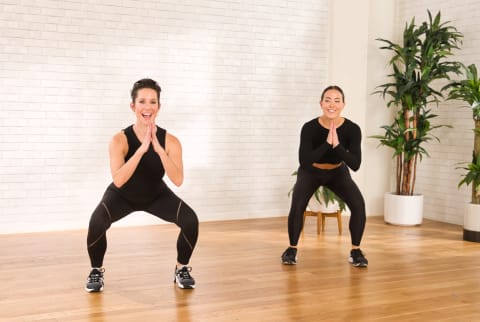BB Arrington, NASM-CPT, breaks down the mechanics of how to properly perform a squat so you can strengthen your body without getting injured. We’re going back to the basics with this one. Typically you should try to squat until your quads are parallel to the ground, but if your flexibility doesn’t allow this, go as low as you can while keeping your form and making sure your knees don’t dip in toward each other. Staying aware of your foot placement on the ground will also make sure you’re achieving the proper squat form. “For your standard squat, your knees should track in line with your second toe and move past the toes on the way down,” explains Arrington. While this may change in other squat movements, this form will prepare you with a stable base. Beyond weights, changing the position of the squat or incorporating plyometrics (explosive movement, like a jump) can challenge your muscles in different ways. Here are a few versions to try (and you can find a full list of squat variations here).



